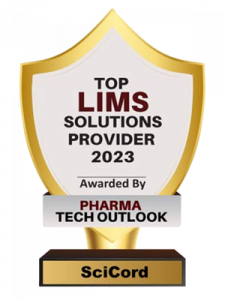This article will focus on the Pharmaceutical industry and the transition these labs are making from paper to digital documentation for a paperless lab. For years, investment in digital solutions to manage, record, and make sense of lab data was mainly limited to major pharmaceutical institutions.
These companies initially deployed Laboratory Information Management systems (LIMs) and more recently Electronic Laboratory Notebooks (ELNs). Now, even smaller laboratories can afford and benefit from the transition from physical notebooks to a digital environment.
Why Go Paperless?
- Data is stored in one easy to find location.
The data isn’t in multiple notebooks stuffed into the bottom of someone’s desk or in off-site storage but accessed via a database or cloud solution.
- The capability of sharing documents.
Through managed access, users can share documents, review documents, and approve documents, increasing the laboratories efficiency.
- Search Tools.
Users can search for documents, resources, methods, etc. when they need them. Instead of having to leave the lab and look for a specific item, the user is able to digitally find, review and, if desired, reference or attach supporting documentation.
- Cost Savings.
The laboratory will be able to complete more tasks using the same resources, with documented efficiency increases of 30% over paper systems. In addition, the lab also avoids the costs of off-site storage for physical notebooks.
- Compliance.
Some ELN and LIM systems are Regulatory Compliant.

What does ELN and LIMS mean and Why It Matters?
The strength of an ELN solution is its ability to efficiently document laboratory work processes, enhancing collaboration and document sharing among colleagues. However, typical ELN solutions often lack robust support for defining samples, conducting detailed analyses, and structuring results—essential for advanced developmental stages. They also fall short in workflow management, including document and sample review cycles, and adhering to Good Manufacturing Practice (GMP) regulations. Consequently, ELNs are primarily suited for early-stage development or must be supplemented with a LIMS for comprehensive support in pharmaceutical development.
The strength of a LIMS lies in its comprehensive management capabilities, effectively overseeing samples, users, instruments, resources (such as solutions and standards), structured data, and integrating applications seamlessly. Positioned at the core of information management, LIMS enables processing and reporting of data essential for later stages of drug development. However, its highly structured framework can impede capturing real-time bench data effectively. Moreover, implementing and maintaining a LIMS poses challenges, especially for smaller companies lacking dedicated IT resources.
Combining ELN and LIMS offers significant advantages for companies involved in advanced drug development stages. ELN serves as a practical solution for recording bench activities efficiently, interfacing seamlessly with LIMS to access managed resources, while LIMS acts as the central control and reporting hub. Previously, integrating ELN and LIMS required substantial corporate commitment and resources. Recent advancements, exemplified by
SciCord, highlight a shift towards hybrid solutions that integrate the best features of both ELN and LIMS into a single application. This approach eliminates the need for complex integration processes, thereby minimizing implementation and maintenance efforts required to achieve a fully paperless laboratory environment.
How to decide on an ELN and LIMS?
Selecting an ELN or LIMS system depends largely on a laboratory’s specific needs and developmental stage. Considerations include the types of work planned for the future and whether an ELN alone suffices or if integrating a LIMS is necessary. For non-GMP laboratories, investing in expensive GMP-compliant digital documentation systems may not be necessary. Additionally, the size of the laboratory plays a crucial role in determining the feasibility of implementing and maintaining these systems.
While larger companies may prefer integrated ELN and LIMS solutions for comprehensive data management, smaller organizations lacking extensive implementation and maintenance resources might opt for hybrid models. It is essential to assess where and how the ELN/LIMS will be deployed, its integration with existing IT infrastructure, user interface friendliness, instrumentation compatibility, licensing models, and compliance requirements. Understanding these factors ensures that the chosen ELN and LIMS system effectively meets the laboratory’s operational needs and facilitates a smooth transition towards a paperless environment.
The continuous evolution of ELN and LIMS technologies provides laboratories with increasingly sophisticated tools to streamline workflows, enhance data integrity, and meet regulatory requirements. Advancements such as cloud-based solutions and integrated platforms offer flexibility and scalability, allowing laboratories of all sizes to adopt tailored solutions that optimize efficiency and support innovation in scientific research and development. By leveraging these technologies, laboratories can achieve greater operational agility, reduce costs, and accelerate the pace of discovery and development in the pharmaceutical and life sciences sectors.
Here are other items to consider:
- Where will the ELN/LIMS be in use?
- What is the Main Purpose?
- How will it be integrated with the current IT Infrastructure?
- Is the User Interface easily understood? ‘Friendly’?
- Instrumentation Connection?
- What type of Licensing Model?
- Compliant or Not Compliant?
Understand your needs before jumping-in to buy an ELN or LIMS. Too many times companies have sunk large amounts of money into Laboratory IT programs that sputter along and eventually fail. End-user adoption is important, but if the ELN or LIMS doesn’t integrate well with other systems, the end-user will never have a chance to utilize the ‘friendliness’.
SciCord offers a
GMP-compliant product that can be used for Analytical QC, Developmental Studies, Synthetic Chemistry, and Manufacture Batch Records. It combines the compliance and structured aspects of the LIMS with the flexibility of an ELN. As SciCord is a
cloud solution, no hardware will need to be purchased and integration with any current IT infrastructure is simple. The program can either be accessed via the web or through a Client portal downloaded onto the desktop. Also, because SciCord
utilizes the spreadsheet paradigm the user interface is highly intuitive making the solution an easy transition for users.
Going Paperless
Choosing an ELN, LIMS, or Hybrid system is the first step towards transitioning to the paperless environment. The remaining way isn’t always easy.
Road bumps can be found with IT integration, end-user adoption, customization and validation issues. Nonetheless, the benefits of such a system far outweigh any of these road blocks and the best systems find a way to minimize these issues as laboratories make the transition.





Recent Comments